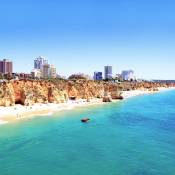46 Best Things to Do in Belem
Showing 31 - 45 of 46

Igreja de São Domingos, Lisbon Jacek Plewa | BY-SALisbon’s Igreja de São Domingos church, in the Baixa district, has played a key role in many of the city’s tumultuous historical events. It has seen earthquakes, fires, pogroms as well as royal weddings and other historic ceremonies. Today there is a palpable sense of history, and as well as having a vibrant congregation. This place draws in tourists who come here to escape the hustle and bustle of city life, and soak in the sombre atmosphere of this unique, if slightly eerie place of worship.
The original church was consecrated...

Praça da Figueira - Lisbon Bernt Rostad | BY-SAPraça de Figueira is a large square in the centre of Lisbon, one of three in the Baixa district. The name translates as fig tree square, although there is little sign of the original trees. The square was created in the 18th Century after the Lisbon earthquake of 1755 had destroyed the buildings that had stood on the site beforehand (as well as much of the rest of the city). It had previously been the location of Lisbon’s main hospital; the Real de Todos os Santos. Plans to rebuild...
World famous museum with collections of Oriental, European and Classical Art. Regular exhibitions

Manueline portal - Igreja da Nossa Senhora da Conceição SchiDD | BY-SABuilt around 1500 on the site of an ancient synagogue, and also known as Our Lady of the Conception, this was once the second largest place of worship in Manueline Lisbon. Nowadays this historic church, with an ornate façade reminiscent in style and grandeur of the Jerónimos Monastery in Belém, seems to be sandwiched between two more pedestrian buildings down a largely overlooked street. But therein lies the story of this building.
Mostly destroyed in the...

Igreja de Santo António Miss Quarrel | BY-SASaint Anthony is Lisbon’s main patron saint and this church, dedicated to his memory is thought to have been built on the exact spot where he was born in 1195.
The church, which is found between the Baixa and Alfama district, was built in the Baroque-Rococo style and the exterior bears a closer resemblance to a theatre or grand civic building than to a Catholic church. There is thought to have been some kind of chapel here since the time of the saint’s death in the 13th century. However, the structure we see today was...
36. Lisbon Cathedral
Reputed to be the oldest building in Lisbon, the cathedral (Sé de Lisboa) certainly has the appearance of being built to last. Compared to the frivolous Manueline architecture of the Jeronimos Monastery the Romanesque lines of the cathedral appear quite austere. Along with castellated walls and arrow slits in the towers Lisbon Cathedral, like other Portuguese cathedrals of the period, had the appearance of a fortress as much as a church.
Work began on the cathedral in 1147, the same...

Casa Museu Dr. Anastácio Gonçalves Juntas | BY-SAThis museum located in central Lisbon district of Saldanha is named after its one time owner, the eminent ophthalmologist and art collector Doctor Anastácio Gonçalves (1888-1965). The house is known as the Casa Malhao as it was the home and studio of the well known painter José Malhoa. Dr Gonçalves bought the house from Malhao a year before his death in 1932.
The quirky house was designed by the architect Norte Junior and was awarded the Valmor prize for architecture in 1905. Dr Gonçalves used the house to display the impressive art collection he accumulated during his lifetime. The...
Set in a commanding position overlooking Portugal's capital, the Castelo de São Jorge dates back to Moorish times. The existing citadel is mainly medieval and contains the ruins of the royal palace and gardens
Perched upon a hillside in the Graca neighbourhood, Miradouro da Senhora do Monte, (Our Lady of the Hill), looks out over Lisbon and is the city's highest lookout point or miradouro. With such a position it means it offers uninterrupted 250 degree panoramic views across Lisbon from the stunning old quarters and castle to the downtown district of the city and beyond; it's a perfect opportunity to get some amazing photographs of the landscape and city as well as the Tagus River estuary and the Castle of Saint George.
This sight is a real hidden gem. Owing to its location just...

Lisbon number 12 tram dziambel | BY-SAIt only takes around 20 minutes to complete the full circuit of Lisbon’s number 12 tram route, but climbing into one of the iconic, yellow Remodelado coaches can be a fun way of getting to see the Baixa and Alfama districts and taking in sights such as the Se Cathedral and St Anthony’s Church.
The tram doesn’t get to build up much speed on the journey; there are quite a few steep inclines in this part of town, and there can be some pretty hair-raising sharp turns and sudden jolts. But this, together with the sound of the brakes shrieking and the people-watching opportunities are,...
Imposing 17th century monastery overlooking Lisbon. Built in the Mannerist style the monastery's Pantheon contains the tombs of the House of Braganza.

Costa da Caparica beach railway Mogadir | BY-SAThe huge crescent of sand that stretches southwards from the town of Costa da Caparica is home to a number of fantastic beaches. And whilst those in front of the numerous apartment blocks in the town itself are nothing to complain about, the further down the coast you head, the wider and less built up they becomes. In fact within a few km there are only sand dunes as a backdrop - keep going and it becomes a protected landscape of sculpted cliffs and forest.
For many visitors to Costa da Caparica the appeal is you can hop on a bus, train or ferry in Lisbon and be here in half an hour...
The Museu Militar (Military Museum) in Lisbon is located below the Alfama on the site of a 16th century foundry where amongst other things cannons were cast. Many of the weapons on display now significantly predate these; medieval weapons such as maces, crossbows and lashes; 14th century mortar cannons. The museum's star exhibit is the two-handed sword of Vasco da Gama which stands as tall as a man.
There is a considerable collection representing the 'age of chivalry' with many suits of amour which would have been custom made for the crusading knights and their horses.
One of...
The Palace at Queluz was built in the latter half of the 18th century from a design by two of the periods most esteemed architects; Frenchman Jean-Baptiste Robillon and the Portuguese Mateus Vicente de Oliveira. Together they created this "Portuguese Versailles" in the Rococo style as a manor house for King Pedro II.
During the reign of Maria I (1777-99) Queluz becamethe official residence of the Royal family. Unfortunately for Maria I she is largely remembered for her bouts of mania followed by slumps into prolonged depressions.
The main façade of the palace is relatively...
The Church of Santa Engracia is one of Lisbon's finest religious buildings. Located close to the Monastery of São Vicente de Fora in the Alfama district, the white dome rises high above the surrounding jumble of cobbled streets.
The current building dates back to the 17th century although there had been previous churches on the site for around 100 years. As with the National Pantheon these churches were dedicated to Santa Engrácia, a 4th century martyr from Braga. Work began on the present day structure in 1681 after the...
Pages
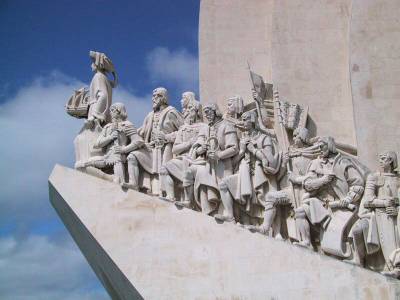
Belem travel guide »
Beautiful, culturally resplendent and immensely significant in Portuguese history, Belém is one of the jewels in Lisbon’s crown. In terms of places to visit and sights to see, this elegant area of the city...

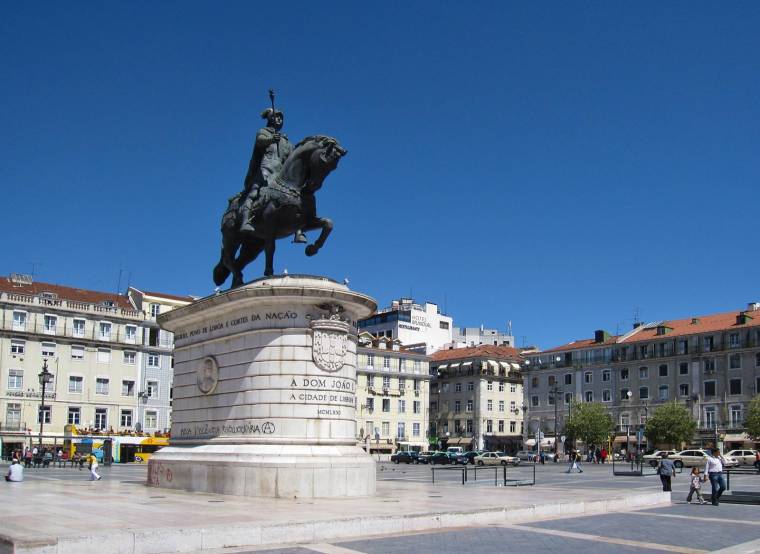



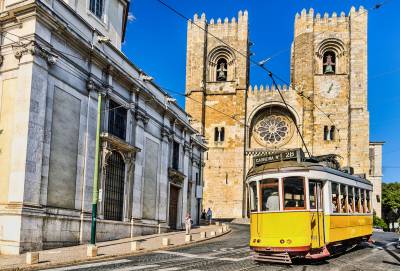




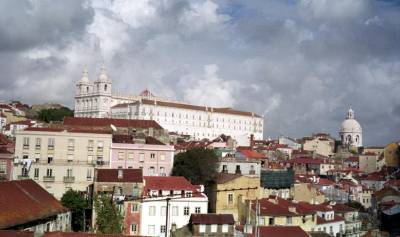




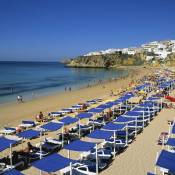 Albufeira
Albufeira
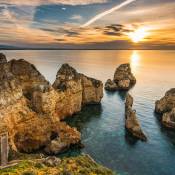

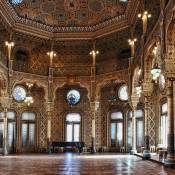


 Cascais
Cascais

